Diagnosis of human fascioliasis in Arusha region, northern Tanzania by microscopy and clinical manifestations in patients
- PMID: 26695775
- PMCID: PMC4689000
- DOI: 10.1186/s12879-015-1326-9
Diagnosis of human fascioliasis in Arusha region, northern Tanzania by microscopy and clinical manifestations in patients
Abstract
Background: Human fascioliasis (HF) is a zoonotic disease that has been identified in many countries worldwide. This report concerns the identification and clinical management of cases of human fascioliasis in the suburbs of Arusha city, northern Tanzania in 2013. Fascioliasis is included among the WHO's Neglected Tropical Diseases as a plant transmitted trematode infection. Human fascioliasis has not been described before in the East Africa region, including Tanzania.
Methods: Patients presenting at a primary healthcare centre in Arusha Region, northern Tanzania provided fresh stool samples for routine ova and parasite screening (saline and iodine preparations). Subsequent stool samples were preserved in 5 % formalin in saline and subjected to ether sedimentation for examination.
Results: Out of 1460 patients, 305 (21 %) were diagnosed positive for fascioliasis based on the demonstration of brownish, oval eggs with inconspicuous opercula in stool. Two distinct egg sizes were identified; large 170-212.5 by 115-150 μm (mean 194.5 by 130.5 μm) and smaller eggs 120-150 by 87.5 - 112.5 μm (mean 138.8 by 101 μm). Clinically, patients presented with fever (39 - 40 °C) and abdominal pain. Some patients had pruritis around the mouth and their lips were swollen. 3 patients were treated and cured with single dose Triclabendazole. The remaining 302 patients were treated with Nitazoxanide and 122 (40 %) were cleared of infection with a single course. Snails of the genus Lymnaea were found in the surroundings.
Conclusions: This report serves to remind medical professionals in East Africa that HF is a probable differential diagnosis in patients presenting with similar symptoms. It is possible to diagnose fascioliasis by light microscopy although specific antigen tests are required for confirmation. Human fascioliasis however, has not been described or reported in Tanzania before and begs further investigation.
Figures
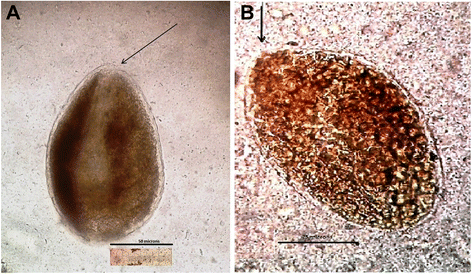
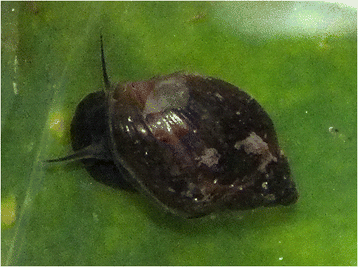
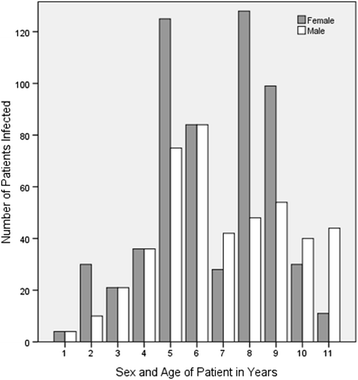
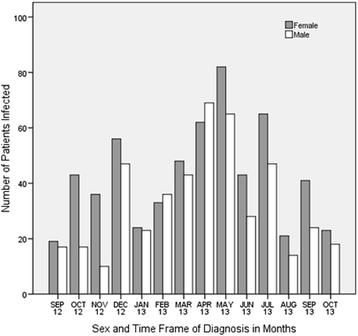
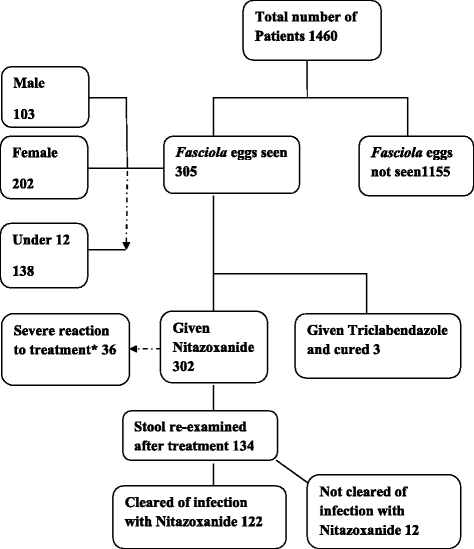
Similar articles
-
Fasciola hepatica as a cause of jaundice after chewing khat: a case report.Neth J Med. 2013 Nov;71(9):478-9. Neth J Med. 2013. PMID: 24218422
-
A familial outbreak of fascioliasis in Eastern Anatolia: a report with review of literature.Acta Trop. 2011 Jun;118(3):177-83. doi: 10.1016/j.actatropica.2008.08.013. Epub 2008 Sep 21. Acta Trop. 2011. PMID: 18930014 Review.
-
Human fascioliasis: a re-emerging disease in upper Egypt.Am J Trop Med Hyg. 2015 Jul;93(1):76-9. doi: 10.4269/ajtmh.15-0030. Epub 2015 Apr 13. Am J Trop Med Hyg. 2015. PMID: 25870421 Free PMC article.
-
Imported Fasciola hepatica infection in the United States and treatment with triclabendazole.Clin Infect Dis. 2001 Jul 1;33(1):1-5. doi: 10.1086/320870. Epub 2001 May 23. Clin Infect Dis. 2001. PMID: 11389487
-
Hepatic fascioliasis: case report and review.Rev Inst Med Trop Sao Paulo. 1996 Jan-Feb;38(1):69-73. doi: 10.1590/s0036-46651996000100013. Rev Inst Med Trop Sao Paulo. 1996. PMID: 8762643 Review.
Cited by
-
Triclabendazole in the treatment of human fascioliasis: a review.Trans R Soc Trop Med Hyg. 2019 Dec 1;113(12):797-804. doi: 10.1093/trstmh/trz093. Trans R Soc Trop Med Hyg. 2019. PMID: 31638149 Free PMC article. Review.
-
Triclabendazole Treatment Failure for Fasciola hepatica Infection among Preschool and School-Age Children, Cusco, Peru1.Emerg Infect Dis. 2021 Jul;27(7):1850-1857. doi: 10.3201/eid2707.203900. Emerg Infect Dis. 2021. PMID: 34152949 Free PMC article.
-
Prevalence of Bovine Trematodiases and Associated Risk Factors in Nyagatare District, Rwanda.Vet Med (Auckl). 2023 Dec 11;14:221-231. doi: 10.2147/VMRR.S430581. eCollection 2023. Vet Med (Auckl). 2023. PMID: 38106360 Free PMC article.
-
Fascioliasis complicated by acute necrotizing pancreatitis in an Ethiopian child - a case report on a rare complication of a rarely reported emerging disease.IJID Reg. 2022 Mar 24;3:135-137. doi: 10.1016/j.ijregi.2022.03.016. eCollection 2022 Jun. IJID Reg. 2022. PMID: 35755466 Free PMC article.
-
Fascioliasis.Adv Exp Med Biol. 2024;1454:157-201. doi: 10.1007/978-3-031-60121-7_5. Adv Exp Med Biol. 2024. PMID: 39008266 No abstract available.
References
-
- Chandler AC, Read CP. Trematodes or Flukes: Other Trematodes III. In: Introduction to Parasitology. 10. New England: John Wiley & Sons Inc; 1968. pp. 299–315.
-
- Acha PN, Szyfres B. In: Sceintific and Technical Publication No. 580. Zoonoses and Communicable Diseases Common to Man and Animals. 3rd Edition; vol III Parasitoses. Pan American Health Organisation. Washington, D.C.: Pan American Health Organization; 2003. Pp 115 – 125.
-
- Cuomo MJ, Noel LB, White DB. Diagnosing Medical Parasites: A Public Health Officers Guide to Assisting Laboratory and Medical Officers USAF. 4th Edition. Air Education and Training Command Publications; 2009.
MeSH terms
Substances
LinkOut - more resources
Full Text Sources
Other Literature Sources
Medical
Research Materials
Miscellaneous

